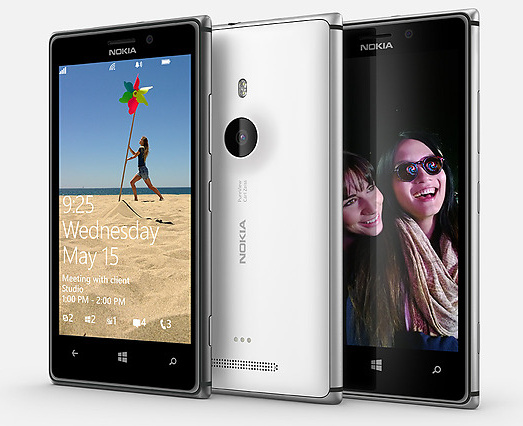
Key features
- Quad-band GSM/GPRS/EDGE support
- Quad-band 3G with 42 Mbps HSDPA and 5.7 Mbps HSUPA support
- 4.5" 16M-color PureMotionHD+ AMOLED capacitive touchscreen of 1280 x 768 pixels
- 8 megapixel autofocus camera with LED flash, 1080p@30fps video recording
- Optical Image stabilization with floating lens technology
- 1.3MP front-facing camera
- Windows Phone 8 OS
- 1.5GHz dual-core Krait CPU, Adreno 225 GPU, Qualcomm MSM8960 chipset, 1GB of RAM
- Wi-Fi 802.11 a/b/g/n, dual-band
- GPS receiver with A-GPS and GLONASS support
- Free lifetime voice-guided navigation
- 32GB of inbuilt storage
- Stylish aluminum frame results in a thinner and lighter profile than the Lumia 920
- Active noise cancellation with a dedicated mic
- Wireless charging with optional accessories
- Built-in accelerometer, gyroscope and proximity sensor
- Standard 3.5 mm audio jack
- microUSB port
- Bluetooth v3.0 with A2DP and file transfers
- SNS integration
- Xbox Live integration and Xbox management
- NFC support
- Digital compass
- Nokia Music
- FM radio
Main disadvantages
- No microSD card
- No system-wide file manager
- No lockscreen shortcuts
- Mono sound for video recording
Improved user interface
Windows Phone 8 is Nokia's only smartphone OS and the Finns have taken care to add as much value as possible to the Lumia line. And since Microsoft doesn't really allow UI customizations, adding value translates to supplying exclusive apps and services.
The Nokia Lumia 925 comes with the new Amber update preinstalled but that doesn't change the user experience dramatically. It does add a few features like Glance Screen, FM radio support and a new camera lens, but the rest is barely different from the previous WP8 iterations.
The Nokia Glance Screen is one of the coolest features that the Amber update brings along. It's a tribute to the MeeGo lockscreen (and Symbian smartphones of old), where you can always see a clock and get any missed events flagged right on the black standby screen. And just like on the Nokia N9, you can wake up the phone with a double tap. The Glance Screen feature leverages on AMOLED to achieve very good power efficiency - only the handful of pixels needed to display the clock and notifications are actually lit up.
There are several options to the Glance Screen feature. It can either be Timed (after a pre-set period of time it turns off the screen completely to save battery) or always on, if you want to be able to see it at all times.
There's also a fourth option called Peek. It allows you to wave over the phone's face to display the clock and notifications, much like Samsung's Quick Glance.
Final words
It's been eight months since the release of the Lumia 920. At that time, the great design and updated WP8 build, complete with Nokia customizations and exclusive apps, resulted in one of the best smartphones representing the platform.
Much has changed in the time between that launch and the Lumia 925 we have today. The introduction of the Lumia 1020 is perhaps the most significant development, although that matters mostly to photography purists that want the best possible image quality from their smartphone.
New flagships and camera interfaces aside, the user experience you'll get is largely the same as what the Lumia 920 offered more than half a year ago. Even the rebranded HERE Maps and Drive+ global navigation suite is no longer a Lumia exclusive, as Nokia have made it available (for a price) to other WP8-powered handsets in the Windows Phone Store.
So with such marginal software updates (which the Lumia 920 will also get) aside, what it really comes down to with the Lumia 925 is the updated exterior and the new 6-element camera lens. The improved image quality along with the AMOLED screen, aluminum frame, and resultant thinner and significantly lighter body are all marked improvements over the Lumia 920.
But, how much will those improvements actually run you? Currently, the Lumia 925 retails at around €500. This is significantly more than the Lumia 920, which can be had for around €325. So while the 925 is definitely a better smartphone, we can't in any way recommend paying such a premium for it.
After all if you must have Nokia's cream of the crop then the just-announced Lumia 1020 is the only way to go, anyway. It features an incredible 41MP PureView camera, complete with a huge sensor OIS and Nokia's very easy-to-use and intuitive Pro Cam Lens. However, besides doubling up the RAM to 2GB, all the other internals are identical, so there isn't much of a performance difference between that and the Lumia 925. The real kicker, though, is the price. The Nokia Lumia 1020 is currently up for preorder for AT&T in the US for $660 unsubsidized, which translates to only slightly more than the Lumia 925.
If, however, you want to go easy on your wallet, and don't want to lug around a hefty device like the Lumia 920, there are a couple of viable alternatives. The Samsung ATIV S and HTC Windows Phone 8X both offer Windows Phone 8 for less than even the Lumia 920, with the ATIV even giving you a bigger screen and larger battery. And we can't reiterate enough that the formerly exclusive-to-Nokia mapping and global navigation suite is now available, to these devices as well. It's even free of charge in North America, as well as the UK, Germany, Spain, France and Italy.
Ultimately, if premium feel on the Windows Phone platform is what you're after, and you don't like a jutting camera sensor dominating the back of your device, then the Nokia Lumia 925 is your best bet. It addresses two of the biggest issues people had with the former flagship, bulk and weight, and the AMOLED display's ability to turn off pixels lends itself really well to the predominantly black Windows Phone interface.
Pricing is its biggest Achilles' heel, though, as it's hard to justify paying over €150 more for a Lumia 920 with a redesigned body, especially with competitor alternatives hovering at half the price! More than likely, the release of the Lumia 1020 will take most of the wind out of the 925's sales (sic), so to speak, which may force it into a more accessible midrange market.
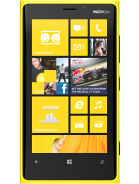
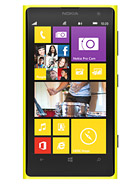
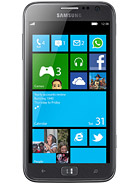
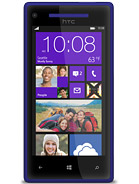
No comments:
Post a Comment